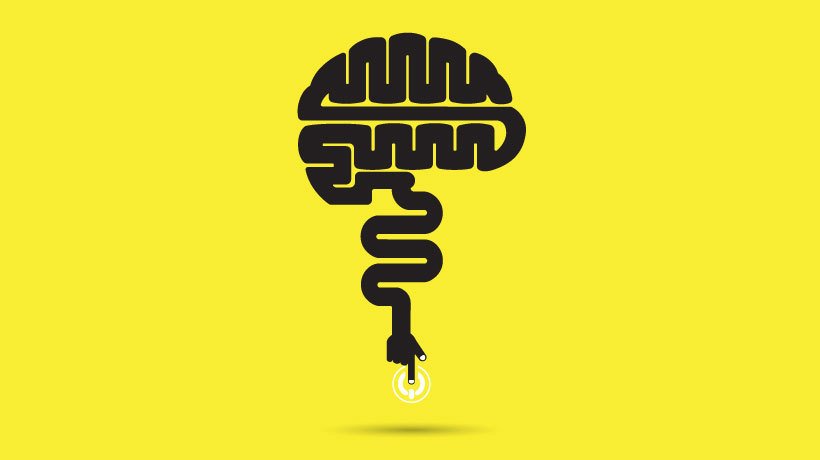Leaving ID For LXD
Dear ADDIE:
I've been in a relationship for a long time. I knew it wasn't perfect, but we had our moments. However, I've met someone new. I'm thinking of breaking up with Instructional Design (ID) to run away with Learning Experience Design (LXD). LX in roman numbers is 60, while ID is only 1. LXD wins. Right? Thoughts? - ID
Dear ID:
Looking at job titles related to L&D, there's a trend you probably noticed recently: More and more Learning Experience designers are wanted, more and more Learning Experience designer titles show up on LinkedIn. I did some data crunching on titles and job descriptions. Well, it's almost like we're changing the title but leaving the job requirements as is...
You've been in a relationship with your significant other but you're eyeing for something new, something more exciting, a brand new "experience". This is natural! You're in a transition. During this transition, you're going to slowly convince yourself that it is time to break up with the old, and date the new. You'll start associating every bad thing with the old one, and every good thing with the new.
You asked for my thoughts, so here it is. First, you're right, LX is 60 and ID is only 1. However, neither LXD nor ID is a valid Roman numeral.
Learning Experience Design will not solve all the problems you had with Instructional Design! If the only thing that held you back from putting the "learner experience" in the focus was the title, it's not likely that your relationship will change dramatically.
However, if you believe that changing your title you see on your card will nudge you every day to move away from content-thinking to action-thinking, from learning objectives to performance objectives, from pages and slides to real needs of people at work, then go with the flow! Enjoy the LX ride!
The Dating Experience
You haven't been out there in the dating world for a while, so let me help you out with some research on how to create the best dating profile! Based on the research paper, an evidence-based approach to an ancient pursuit: A systematic review on converting online contact into a first date [1], there are a couple things to keep in mind when you're creating your online dating profile:
Online communication was most effective in leading to an in-person meeting if there were: a genuine interest; a rapid turnaround; reciprocity in self-disclosure; mimicry of body movements on the webcam; avoidance of criticism; humor[...]
How Do These Research Findings Help With Finding Your New Love, A True Learning Experience Designer?
Changing your title is the first step. Here are some other suggestions to move from getting to know experience design to dating it:
1. Show Genuine Interest In Your Target Audience
People come to work every day to get things done under limited circumstances. They might have competing priorities, technical difficulties, challenging managers. The more you know how their daily life goes, the more likely you can design a "learning experience" that empowers them to do their job.
Think outside events; whether it's online or face-to-face. Find out your target audience's timeline, workplace routines, daily tasks. Focus on what these people do, not what they need to know. Start with how they're measured in their day-to-day activities, and what behaviours would lead to better performance. You can train customer service agents on building rapport with customers for weeks in vain if, when they get on the phone, their supervisor says their average handle time must be under 1.5 minutes. Include managers and supervisors in every design. They're the most important people for reinforcement.
2. Be Quick
A rapid turnaround of ideas or even prototypes may help you get to more effective solutions that wouldn't take weeks or months. Software development used to have two release cycles a year. Nowadays, with agile development, a sprint can result in significant changes in weeks. How do we keep up with the changes? What if the business says my Artificial Intelligence content creator may be only 90% of where I need to be but I don't have time to wait weeks for a 100% solution?
3. Reciprocity In Self-Disclosure
Honestly, you can't design and deliver experience. You can do your best to tell your story but it's up to your audience to experience it. And your story shouldn't be about the latest shiny techs and buzzwords in L&D. Your story should be more about the conductor who becomes invisible between the audience and the orchestra. About someone whose value is not measured by how long the musical piece takes, but how the experience impacts the short walk in the parking lot after the event, or the watercooler conversations the day after.
User Experience is what brings the audience to fill out the room. The best conductors become invisible during the performance, literally “conducting” the experience by connecting the orchestra with the audience. Letting the music tell the story, creating the experience itself, is more memorable than any drag-and-drop in the WORL&D [2].
4. Mimicry Of Body Movements On The Webcam
The experience of creating the learning experience should follow the same principles as the end result. When you're creating a learning experience about giving and receiving feedback, are you following the principles you're teaching?
5. Avoid Criticism
It's always easier to criticize what already exists than creating something that does not. Criticism has its own place and time. Self-criticism as well! Learning how to avoid self-criticism when creativity is needed can make or break the outcome [3].
6. Humour
Some people might think humour is a waste of time in design. Well, here's a study for that:
Across two studies, Cheng and Wang found that people who watched a funny video clip before a task, spent approximately twice as long on a tiresome task, compared with people who watched neutral or positive (but not funny) videos [4].
While humour and laughter may not directly cause learning, it creates a safe place that promotes better learning:
Humor and laughter may not directly cause learning; however, humor creates an environment that promotes learning. Evidence documents that appropriate humor, and humor that relates to course material, attracts and sustains attention and produces a more relaxed and productive learning environment...[5]
Good luck with your new date!
References:
[2] Engage the WORL&D by Zsolt Olah
[3] How To Overcome Self-Criticism and Lack of Motivation
[4] The Science of Humor Is No Laughing Matter
[5] Humor, laughter, learning, and health! A brief review









